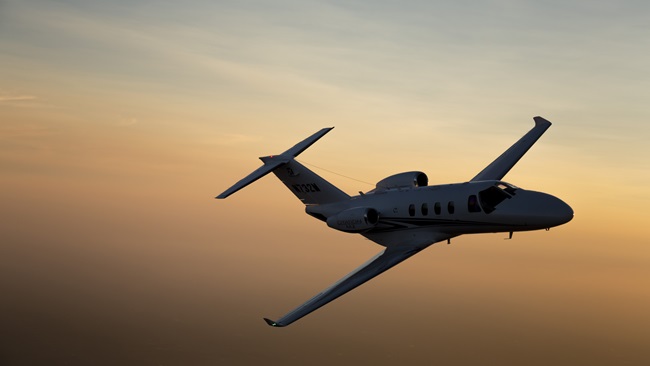Falcon 6X announced
Dassault Aviation may have canceled its Falcon 5X program, but the company announced on Feb. 28 that a replacement is in the works: the Falcon 6X.
Dassault says that the 6X will have the biggest cabin of any business jet in the 5,000-nautical-mile-range category, with the capability of handing a maximum of 19 passengers, or 12 to 16 passengers with seating in three separate lounge areas. Cabin height is set at six feet, six inches; width at eight feet, six inches; and length at 40 feet, four inches. The cabin aisle will be five inches wider than previous Falcons, and 29 windows will give the 6X the highest percentage of window area than other airplanes in this class, Dassault said. Plus, there will be a skylight in the galley area.
In the cockpit, a third-generation EASy III avionics suite dominates—a system based on Honeywell’s Primus Epic platform. Other new equipment includes a standard “FalconEye” combined infrared/synthetic vision system in a head-up display, controller-pilot datalink communications system, and a new digital flight control system that commands all fight control surfaces—including slats and flaps. Dassault says that the 6X’s new flaperons—surfaces that can act as both flaps and ailerons—are the first in any business jet.
As for performance, the 6X claims a 5,500-nm range at Mach 0.80, and 5,100-nm at Mach 0.85; MMO is Mach 0.90. Vref approach speeds of 109 KIAS will be possible, assuming eight passengers, three crew, and a sea level elevation, the company said.
The airplane will be powered by two Pratt & Whitney PurePower PW812D engines in the 13,000- to 14,000-pounds thrust class. These geared turbofans promise improvements in fuel burn, while at the same time reductions in environmental emissions and engine noise, and increased fuel efficiency.
Maximum takeoff weight is set at 77,460 pounds, maximum zero fuel weight will be 45,920 pounds, and maximum fuel weight is projected at 33,790 pounds.
No price information was mentioned, but Dassault said that test flights will begin in early 2021, with entry into service in 2022.




